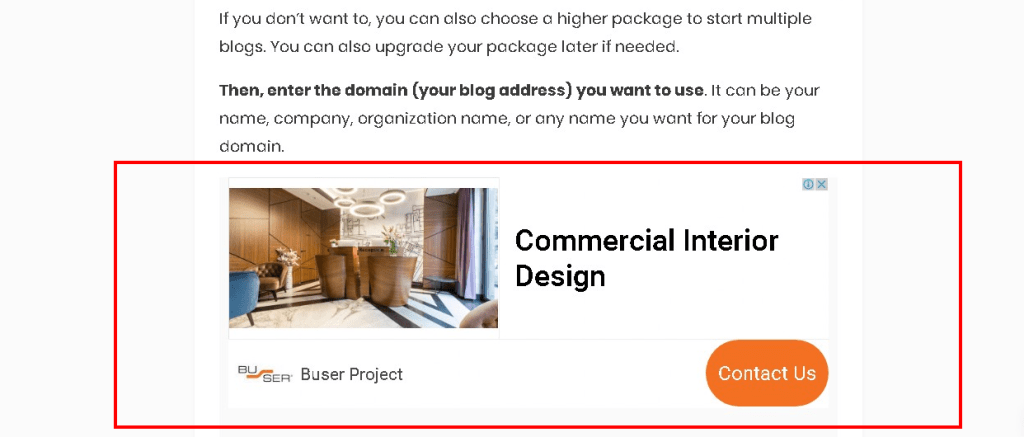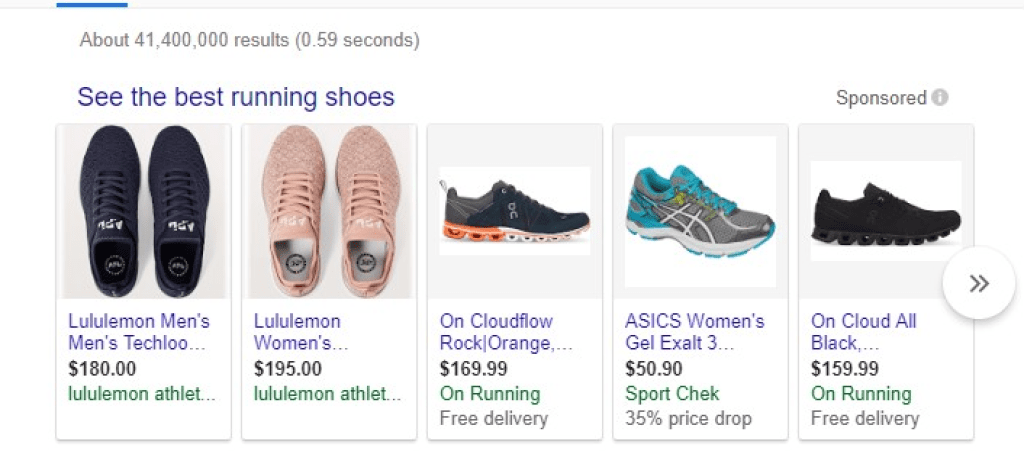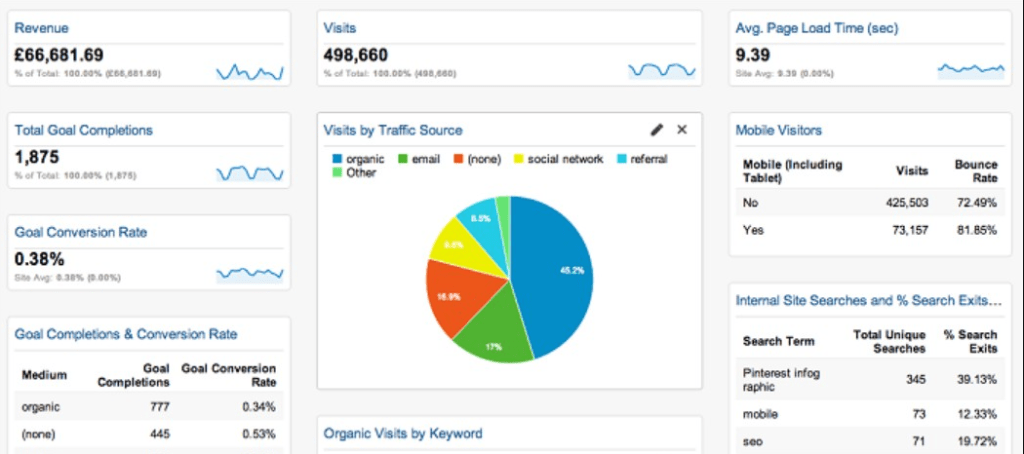
If you own a business or do marketing and want quick, measurable results, you might have heard about PPC ads.
PPC or pay-per-click is a type of online advertising where a brand pays some amount of money to get clicks on their ad. This model lets you get traffic to your websites by targeting keywords related to your product or service.
Today, we are going to look into PPC advertising to understand how it works, and how you can practically set up a campaign. I’ll explain the basics and give you practical advice to get started.
Let’s do it!
Why PPC Advertising is Important in 2025
If you need to start getting leads and sales starting today, you gotta put your money where your mouth is!
PPC advertising holds a vital place in digital marketing today. It offers immediate and measurable results. This means you can quickly set up an ad and start getting results as soon as your ads start running.
This model directly links spending to actual traffic. What that means is that you are only paying money when real people click on your link not when your ads are displayed.
That makes it a cost-effective choice when managed carefully.
When you, as a business launch a new product, PPC campaigns can display its ads at the top of search results to draw attention right away.
And no, you won’t be charged for displaying your ads on top search results. Since you are paying per click, you are practically creating brand awareness for free!
PPC also allows businesses to measure and track every part of their campaign, including click-through rates (CTR), conversion rates, and return on investment (ROI). This will enable you to see exactly how well your ads are performing.
Another significant reason why PPC Advertising is important in 2025 is the precision of its targeting.
In essence, you can choose who to show your ads to through audience targeting. You can choose based on demographics, interests, location, and even device type.
For example, a local business can use geotargeting to connect with nearby customers who are more likely to visit in person.
Understanding the key components
Before you can run a successful PPC campaign, you need to understand the key elements that make it work. So, let’s look at the core components that help bring your ads to the top of search results and drive meaningful engagement.
Keywords and Bidding
In PPC advertising, you are bidding on keywords. keywords are simply words or phrases that people type into search engines when they are looking for products and services.
Your choice of keywords is critical because it directly influences your ad’s relevance to potential customers.
In short, if your keyword is not relevant to what users are searching for, your ads isn’t going to convert, even if they get clicked. And you will eventually use up your budget without any good results.
When doing keyword research for your PPC campaign, it is important to focus on terms that are relevant to your business, with a high likelihood of generating clicks and conversions without excessively high costs.
Quality Score and Ad Ranking
Some PPC advertising platforms like Google Ads assign each ad a Quality Score based on factors like relevance, CTR, and landing page experience.
This score reflects how well your ad meets the needs of users searching for your keywords. A higher Quality Score can help improve your ad’s rank on the page and reduce the cost-per-click (CPC) you pay.
So, it is important to balance your bid amount with a high Quality Score to get the best result from your PPC ads campaign.
Even if your budget is on a tight corner, a well-crafted ad with a strong Quality Score can still perform well. This is how Google decides where to place your ad.
Ad Auction and Ad Placement
The ad auction is a competitive process that occurs every time a user searches for a keyword you’re targeting.
When someone searches for a term relevant to your ad, Google and other platforms conduct an instant auction to determine which ads will show and in what order. Some factors like bid amount, Quality Score, and the expected impact of your ad extensions (like phone numbers or site links) will influence this decision.
Ad placement matters because higher positions typically get more visibility and clicks.
However, the costs for top placements are often higher, especially for competitive keywords. So, to achieve the best ad placement at a manageable cost, many advertisers focus on improving both their bidding strategy and their ad quality.
Setting up your PPC campaign: A Step-by-Step Guide
Setting up a PPC campaign requires a clear strategy and careful planning. And since it involves an investment of money, you want to be careful not to waste your own money.
In fact, there are steps you need to take in order to get your PPC ads campaign running.
Platform Selection
The first step in setting up a PPC ads campaign is deciding which platform you will run your ads on. It is also important to understand how different PPC advertising platforms work before making a decision.
Google Ads is the most popular platform, by the way, but feel free to research other platforms to know which one aligns with your needs.
In fact, here are some of the best converting PPC advertising platforms:
- Google Ads: Ideal for capturing search intent as users actively look for products or services.
- Facebook Ads: Allows for precise demographic and interest-based targeting, making it great for reaching specific audience groups.
- LinkedIn Ads: Highly effective for B2B targeting, letting you reach professionals based on industry, job title, and company.
- Bing Ads: Reaches a different audience demographic, often at a lower cost per click than Google Ads, which can help diversify traffic.
Selecting the right platform depends on where your audience is most active and your specific campaign goals.
Defining Campaign Goals
A clear understanding of your goals helps shape every part of your campaign, from ad copy to targeting and budget.
In fact, this should even be the first step in setting up an effective PPC campaign. You need to make sure you know exactly what you are aiming at. For example, if you plan to sell a product, you should make it clear.
Here are some of the campaign goals you can choose from;
- Increasing sales for specific products or services
- Driving website traffic to generate leads or conversions
- Boosting brand awareness to make potential customers familiar with your business
Setting precise and measurable goals allows you to track the campaign’s success and make adjustments as needed.
Targeting the Right Audience
This is the most important part of every PPC campaign. If you run after the wrong audience, your ads won’t resonate with them, and you will eventually lose all your money.
Most platforms offer targeting based on demographics, location, interests, and device type.
For example, a local business selling smartphones may choose to show ads only to users within a specific geographic radius, who are interested in upgrading their devices. This way, there will be a higher chance of conversion.
In addition to location, demographics, and interest, some PPC ad platforms let you target users based on a set of keywords. This is common with search engine ads including Google Ads and Bing Ads.
This will help you ensure your ads reach those most likely to be interested in your offerings, reduce wasted ad spend, and increase engagement.
Budgeting and Bid Strategy
Setting a realistic budget helps you maintain control over your campaign. You can set daily and monthly limits to manage your spending.
And honestly, this totally depends on your goals. Here are the most common bidding strategies you will most likely come across;
- Manual CPC (Cost-Per-Click): Allows you to set your maximum bid for each click.
- Target CPA (Cost-Per-Acquisition): Focuses on getting as many conversions as possible at your desired cost.
- Maximize Clicks: Automatically adjust bids to get the highest number of clicks within your budget.
It is important to start with a smaller budget because it is going to help you test performance without overspending, and allow you to adjust as you learn what works best.
Ad Creation and Copywriting
Content is still king, right? Yes, and your ad copy should be the king here! It should be able to grab attention and encourage clicks.
Your ad copy should be clear, relevant, and tailored to your audience’s needs.
You will need to emphasize unique selling points, use action words, and include a strong call-to-action (CTA) that is difficult to resist. For example, a CTA like “Shop Now” or “Learn More” gives users a clear next step.
Different platforms also offer various ad formats, including text ads, display ads, and shopping ads, so choose the format that best suits your goals.
Don’t be afraid to utilize AI tools to your own advantage! You can create text ads, display ads, and even video ads. Try this for free!
Creating Effective Landing Pages
Users need to land on a page when they click your link. This page is called a landing page. And it plays an important role in converting ad clicks into actions.
When building a landing page, it should align with the ad’s messaging, and make it easy for users to take the next step, whether that’s making a purchase or filling out a form.
Just make sure your landing page has the key elements based on your needs. For example, you might need to consider:
- Clear headlines that match the ad’s offer
- Easy-to-read content with bullet points and short paragraphs
- A strong CTA that guides users on what to do next
- Fast loading time to keep users from leaving due to delays
As a matter of fact, most landing page builders already have pre-made templates consisting of these elements.
Don’t be afraid to try different variations of your landing page so that you can see which layouts and designs work best for conversions.
Optimization tips for PPC success
Every PPC campaign has one goal; to acquire new clients and make more sales. but whether or not your ads will convert depends on your strategies, especially in optimizing your campaign.
In fact, for a campaign to reach its full potential, continuous monitoring and optimization are essential.
So, let’s look at some of the key strategies to keep your PPC ads performing well, maximize your return on investment, and adapt to real-time changes.
Tracking and Analyzing Metrics
To understand what’s working in your PPC campaign, focus on analyzing key metrics. But what should you even measure?
Knowing which metrics to measure only brings you halfway to understanding what works exactly, and where you need to improve. The key metrics include:
- Click-Through Rate (CTR): Measures how often people click on your ad after seeing it. A higher CTR generally indicates that your ad is relevant and engaging.
- Conversion Rate: Shows the percentage of clicks that lead to desired actions, like purchases or sign-ups. High conversion rates reflect effective ad and landing page alignment.
- Cost-Per-Click (CPC): The amount paid for each click, which impacts your overall budget. Keeping CPC under control ensures cost efficiency.
- Cost-Per-Acquisition (CPA): The cost of acquiring a customer or lead. Monitoring CPA helps ensure your campaign remains profitable.
- Return on Investment (ROI): Gauges the campaign’s profitability. Positive ROI means your ads are generating more revenue than they cost.
Tools like Google Analytics and tools within Google Ads or Bing Ads provide comprehensive insights into these metrics to allow you to fine-tune your campaigns based on actual data.
A/B Testing for Continuous Improvement
Don’t be shy to try out different versions of your ad. This is the best way to know what’s resonating with your audience.
A/B testing, or split testing involves creating two versions of an ad or landing page with slight variations in text, images, or CTAs to see which performs better.
For example, testing different headlines or CTAs on your landing page can reveal which wording resonates most with your audience.
Adjusting Bids and Budgets
Adjusting bids based on performance data keeps your PPC campaign cost-effective. If certain keywords are delivering high conversions, consider increasing bids to maintain strong ad placements.
Alternatively, reduce bids on keywords that aren’t performing well to keep costs under control.
Many advertisers adjust their bids according to the time of day, day of the week, or even specific audience segments to maximize efficiency and return on ad spend.
Optimizing for Mobile
With mobile usage continuing to grow, optimizing PPC campaigns for mobile is more important than ever. This includes using mobile-specific ad formats, concise ad copy, and quick-loading landing pages that display well on smaller screens.
Mobile-friendly ads help capture audiences on the go and can increase the number of clicks and conversions from mobile users.
Some PPC platforms also allow you to adjust bids specifically for mobile devices, so you can target mobile audiences more effectively.
PPC Ad Types and When to Use Each
Choosing the right type of PPC ad is important I you want to achieve your campaign goals. Each ad type serves a unique purpose, so understanding when to use each one can help you maximize your results.
So, let’s take a look at the PPC ad types available…
Text Ads
Text ads are one of the most common forms of PPC advertising, appearing at the top and bottom of search engine results pages (SERPs).

They consist of a headline, description, and URL, making them simple and direct. Text ads are highly effective for search intent because they appear when users actively search for related keywords. This makes them ideal for businesses looking to capture high-intent traffic, such as users searching for specific products or services.
Text ads are used for search-focused campaigns where people are looking for solutions or products related to a business.
For example, if you own an AI agency business, you can use text ads to bid on keywords related to Artificial intelligence, such as “Best AI Agency in California“.
This ad will be shown to people looking for AI Agencies in California alone. As simple as that.
Display Ads
Display ads are visually engaging ads that appear across various websites within the Google Display Network or similar networks.

These ads often feature images, graphics, and videos that catch users’ attention while they browse content.
This type of ad works well for building brand awareness and retargeting, as they don’t rely on search intent but reach users during other activities online.
Display ads are effective for reaching broader audiences and for remarketing to users who previously visited your site. They work well in brand awareness campaigns, allowing you to build familiarity with users who may not be actively searching for your product.
Shopping Ads
Shopping ads are particularly useful for e-commerce businesses. They showcase a product’s image, price, title, and merchant information, giving users a preview of what’s available before they click.

These ads appear at the top of SERPs when users search for products, making them highly relevant for buyers ready to make a purchase.
Shopping ads are useful when you sell physical products and want to reach users with high purchase intent. This is great for driving product sales, as they provide detailed information upfront that helps users make purchasing decisions.
Measuring PPC campaign success
To judge your effort, you need to measure your campaign success. This is not just about counting the click numbers, but having deep insight on what’s working, and what’s not.
Start by tracking and analyzing the key metrics, including Click-through rate, conversion rate, CPC, and CPA. But how do you do that? It’s simple, use analytics tools.
Google has a free analytics tool that provides a comprehensive view of these metrics. This tool offers features like audience segmentation, real-time tracking, and behavior analysis to allow you to delve deeper into how users interact with your ads.

All you need to do is set up conversion tracking in Google Analytics to monitor specific actions.
Once you have an idea of how your campaign is performing, feel free to compare your metrics against industry benchmarks to help you understand if your metrics are on par with competitors.
FAQs About PPC Advertising
The key metrics to monitor include:
- Click-Through Rate (CTR): Measures the percentage of ad impressions that result in clicks.
- Conversion Rate: Indicates how many clicks lead to a desired action.
- Cost-Per-Click (CPC): Tracks the average cost of each click.
- Cost-Per-Acquisition (CPA): Calculates the cost of acquiring a customer or lead.
- Return on Investment (ROI): Evaluates the overall profitability of your campaign.
Conclusion
PPC advertising offers businesses a powerful way to achieve immediate visibility, attract targeted traffic, and drive conversions.
To launch a successful PPC campaign, start by clearly defining your goals and selecting the right platform for your audience. Focus on researching relevant keywords, crafting engaging ad copy, and creating landing pages that align with your messaging.
Monitor your campaign metrics regularly, optimize your bids and budgets, and don’t forget to experiment with strategies like A/B testing and retargeting.
So, are you going to plan a PPC ad soon? let me know what you think in the comment section.







